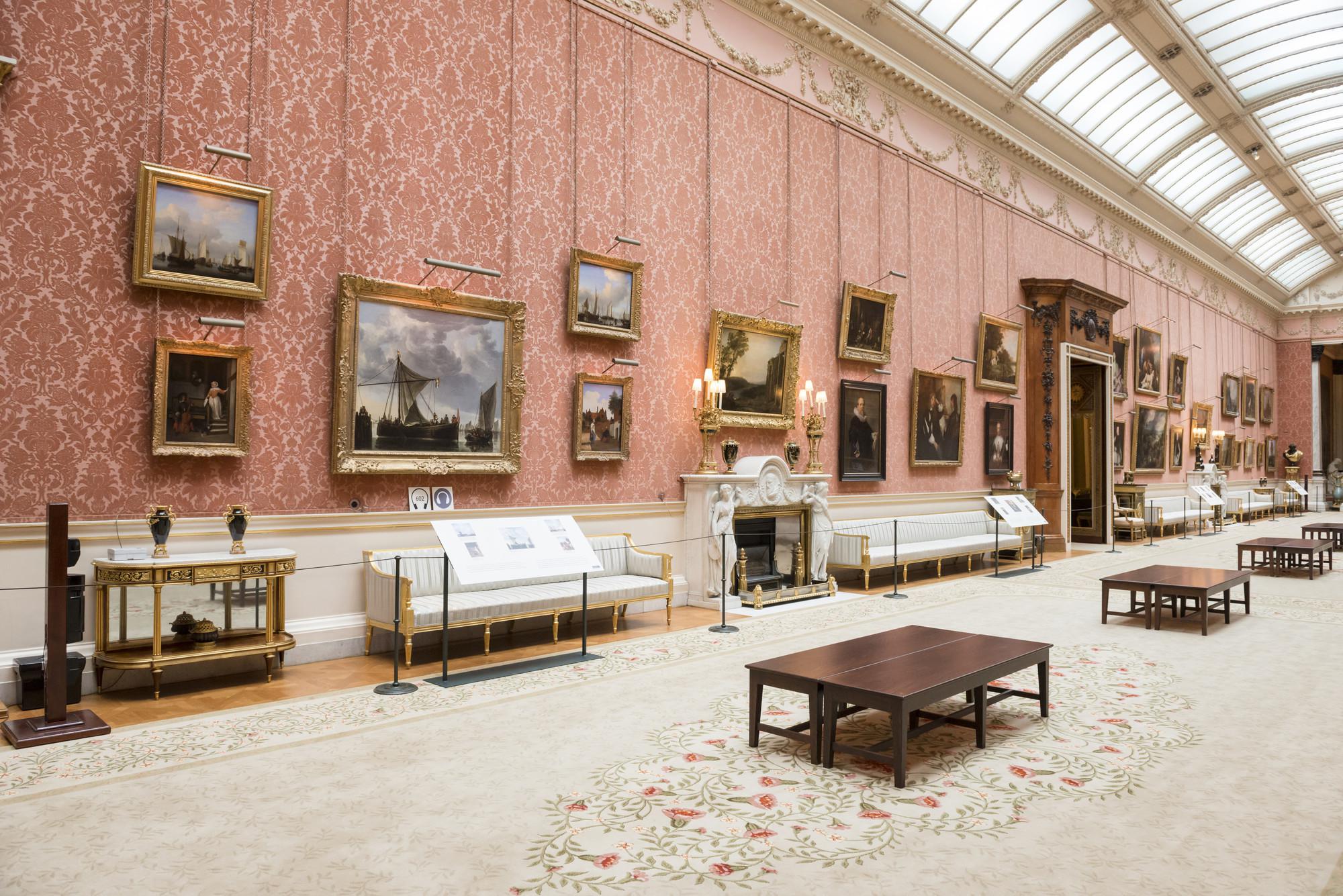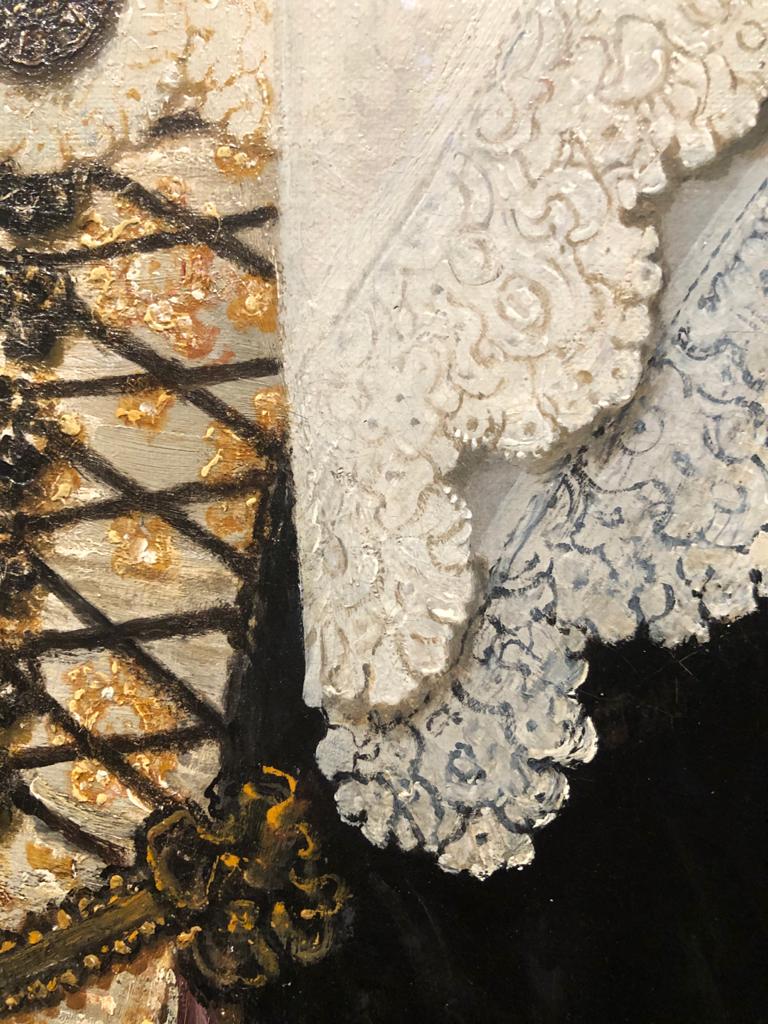★★★★★
‘Masterpieces’ at The Queen’s Gallery, Buckingham Palace
“Priceless landscapes and portraits come together to provide a visual feast.”
Debauched, drunken and idle, George IV was never set to go down in history as the greatest monarch we ever had. But his cultural legacy – in terms of his contribution to the Royal Collection – is unrivalled, with the stunning additions made by Queen Mary, which include the breathtaking parures and tiaras she lavishly curated, coming a close second.
Much of George IV’s most important purchases are on permanent public view in Buckingham Palace’s Picture Gallery; a space designed by John Nash, the Palace’s architect, to display the magnificent picture collection the Prince Regent and later King assembled, and that is the role the Gallery continues to fulfil.

The Picture Gallery, like much of Buckingham Palace, is undergoing extensive and much-needed renovation to protect the historic building for future generations. The 10-year programme of work was approved back in 2017, and the next phase of the Reservicing Programme has begun.
As a result, the paintings that are normally housed there, have been transported to The Queen’s Gallery – located next door to the palace and named after Queen Victoria, the Monarch who made the palace her home.
The building that stood on The Queen’s Gallery original site was also designed by John Nash as one of Buckingham Palace’s three identical conservatories. The conservatory was converted into a private chapel for Queen Victoria in 1843, but destroyed in a German air raid in 1940.


In 1962, at the suggestion of The Queen and The Duke of Edinburgh, the ruined chapel was redeveloped as a gallery for the Royal Collection, which has been looked after by the Royal Collection Trust since 1993.
From tomorrow and until January 2022, you can view these invaluable works of art. ‘Masterpieces’ brings together some of the most important paintings in the Royal Collection, usually only on public view during the annual Summer Opening of the Palace in the peach gallery.


The current Masterpieces collection stands out, as works are often lent to other museums and galleries for exhibitions. In addition, these same works are normally hung as double tiers in the Picture Gallery, but here in The Queen’s Gallery they are all given equal footing and hung at eye level, allowing for the intricacy and detail of each painting to be fully appreciated for the first time.
The exhibition brings together an impressive collection of the very best of Dutch, Flemish and Italian Old Masters. Priceless landscapes and portraits come together to provide a visual feast against the stunning backdrop of the eye-catchingly painted walls of The Queen’s Gallery where the paintings have been thoughtfully arranged for maximum impact.


For me, the most impressive painting is Rembrandt’s Portrait of Agatha Bas. Whilst there is very little to entice us about Agatha’s features, it is in the intricacy of her lace cuffs, the lustre of her pearls and the three dimensional nature of her thumb and fan seemingly projecting beyond the ebony frame that draw the eye in to this particular work, not to mention the extravagant detail on the elaborate fan. It was painted in 1641, with Rembrandt using fine lines made by scratching the back of a brush to give the impression of soft downy hairs around his subject’s temple.




The exhibition is organised by school, with groupings of Italian, Dutch and Flemish paintings each containing some of the finest examples ever produced. Works from the Low Countries, 1630-1680 – the heyday of the so-called Dutch Golden Age – includes Johannes Vermeer’s ‘The Music Lesson’, early 1660s; Gerrit Dou’s The Grocer’s Shop, 1672; A Woman at her Toilet, 1663, by Jan Steen; and Pieter de Hooch’s Cardplayers in a Sunlit Room, 1658.
“Modest in scale and depicting scenes of everyday life, these works are often admired for their minute detail, tactile surfaces and ability to suggest spaces filled with light and air,” the Royal Collection explains.
On a damp and dreary London day I was perhaps unsurprisingly drawn to the paintings that best radiated daylight and the promise of sun such as de Honch’s “Cardplayers in a sunlit room” and his “Courtyard in Delft at Evening: A woman spinning”, as well as Vermeer’s “A lady at the Virginals with a gentleman (The Music Room).


On a day of relentless rain and, let’s face it endless lockdown, it was uplifting to see glimpses of light.
‘There never was an individual less regretted by his fellow creatures,’ George IV’s obituary in The Times declared. ‘What heart has heaved one throb of unmercenary sorrow? … If he ever had a friend — a devoted friend in any rank of life — we protest that the name of him or her never reached us.’
And yet, a trip to see the art he voraciously curated will supply you with yet another perspective on this most controversial of royal figures.
Masterpieces opens Friday 4 Dec 2020, available to see Mondays, Thursdays, Fridays, Saturdays, Sundays until Monday, 31 Jan 2022 . Book here.








